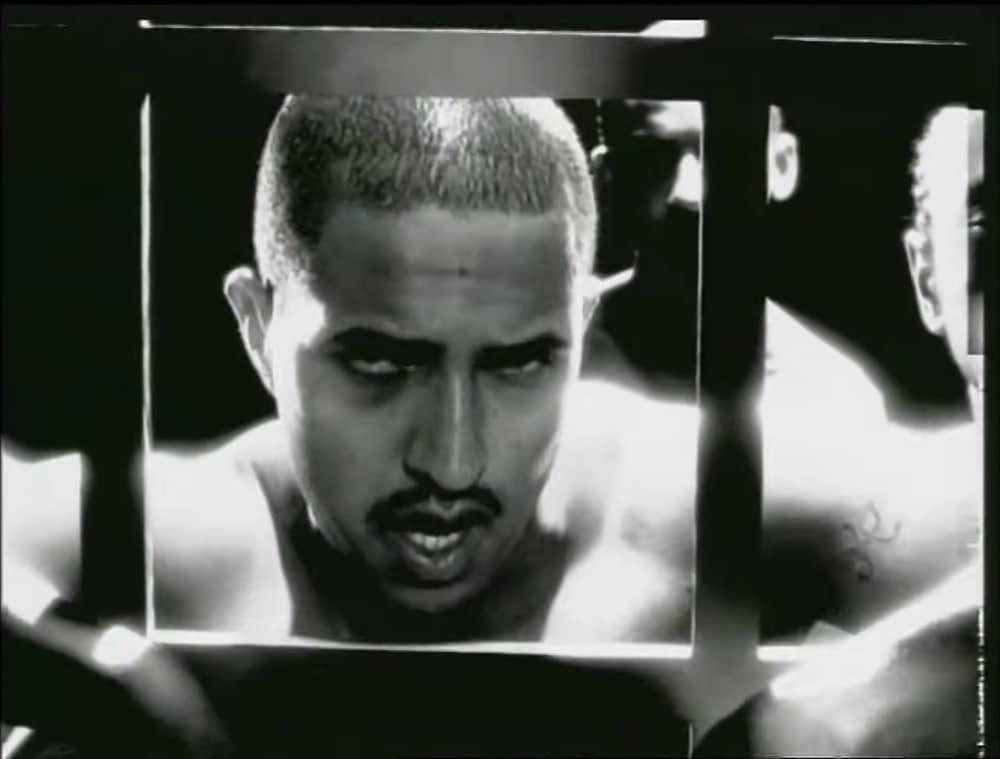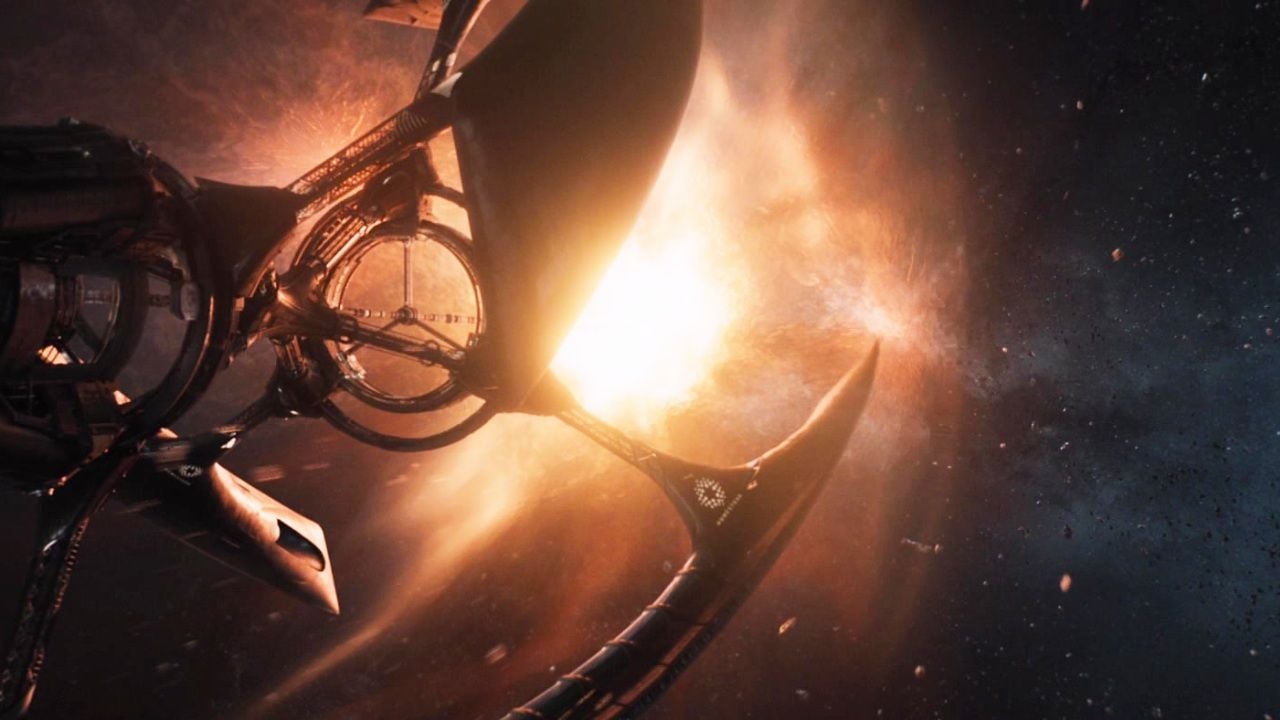The clock runs in slow motion for the music video for the song Diário de um Detento, by Racionais MC’s. Recorded 25 years ago, in 1997, the production directed by Maurício Eça continues to be a reference and can now be considered a classic of national music. or spoke to Eça in an exclusive interview, where he discussed the success of the job and what has changed in the industry since then.
Two and a half decades after visiting the São Paulo Detention House, a former penitentiary in the North Zone of São Paulo – popularly known as Carandiru -, Maurício Eça remembers many of those days in 1997 when he, the director still at the beginning of his career , accepted the challenge of directing the music video for the song Diário de um Detento.
Index
Today a milestone in the history of national rap, the song was released that same year as part of the album “Sobrevivendo no Inferno”, the fourth album by Racionais MC’s, composed by rappers Mano Brown, Ice Blue, Edi Rock and KL Jay.
“I already had a very clear idea that it was an eight-minute song and that it told a story. Brown is a great storyteller, he’s a great screenwriter. The lyrics alone are very visual. I usually say that a music video starts with a good song. And in case you have an excellent song, Diary of a Detainee, “he exclaimed.
An inmate’s diary has three dates in his handwriting: 1, 2, and 3 October 1992. That is, the day before, the day itself and the day after the Carandiru massacre, the massacre in the prison in question that killed 111 inmates on 2 October of the same year.
Despite knowing Racionais MC before getting involved in the project, Eça said he only understood the dimensions it would take later. “I still had no idea of the strength of this song, and I had more and more contact with the project, with all this story.”
“I had a meeting with Racionais, with Mano Brown, where he talked to me about what this song was about, about the importance of portraying the 1992 massacre,” said Eça. “How much the music expressed the prisoner’s daily life and what he lived with this horrible story that happened”.
After hearing Mano Brown’s proposal for the music video, which involved recording within Carandiru, Maurício Eça said he was concerned about whether or not they would get permission for it. He claimed to have made a different proposition to the rapper. “If we can’t film [no Carandiru], let’s try to play something in the studio, ”the director told Brown, but the response was not what he expected:“ No, you don’t understand. Either it’s there, or there’s no clip, “he heard from the rapper.
Elsewhere in the interview, Eça commented on the intention of the hip hop music videos of the time to convey the truth. “I think about hip hop music videos […] they had a question very connected with the truth. How to pass reality in the clip. Often running away from reflections, fantasies, metaphors. So they were very real clips and often they expressed what was being said in pictures, but in a realistic way, ”said the director. “One thing Mano Brown has always said is that it has to be real.” And so it was.
The disc
Despite Maurício Eça’s apprehension, a judge granted permission to shoot inside Carandiru. The problems did not end there, however. “We arrived in Carandiru in the morning with the team, with the Racionais, and then the director of Carandiru at the time said: ‘No, but how do you shoot? You’re not going to film it, are you crazy? ‘”Eça said about the prison warden’s speech.
The group talked to the director about Carandiru, who eventually granted permission for the shoot, but with a number of limitations. “Firstly, entry to Carandiru was not authorized prior to filming. Because normally, when we shoot, we do a technological explorer, a technical visit to the location, to understand the best place, where the light is best at a certain time, where I want to tell this thing. We weren’t allowed to do that, “Eça said, also explaining that there were restrictions on the equipment, such as a ban on tripods.
Given the absence of the technical visit before filming, the group was prepared and took extra equipment to avoid setbacks during the recording. “The cinematographer didn’t know exactly what was there, so he took precautions,” says the director.
“We wanted to show, to express with images that there were human beings who lived there, with stories. So my idea was to do something documentary, but with an aesthetic, with careful framing and slow-motion moments, “she explained.
Eça said the clip was shot on 16mm film, not HD, but the editing was already digital. “To aestheticize this reality a little, without being a raw documentary, but with an aestheticization that they came to call long after ‘Hunger Cosmetics’. No, it has nothing to do with it. I think we wanted to show these human beings who are inside, who have stories, who have lives, who have a lot to tell, ”she said.
“I think the clip demonstrates that a little bit gives a voice to so many people, to so many human beings who are inside in often precarious conditions”, reflected Eça. “And upon entering we understood that the Rationals were the spokespersons of these guys”.
In addition to the footage recorded inside Carandiru, the video clip contains some studio footage and archival footage of the massacre. “It was a very intense clip to make, but at the same time we had no idea what we were doing,” Eça revealed. “I never imagined what would happen to anyone who watched this clip.”

The Impact of an Inmate’s Diary
What happened was that the music video became a huge hit, hitherto unimaginable for novice director Maurício Eça. It was 1997, so “YouTube” was a nonsense word at the time, and the thermometer to understand how the music video acted on the audience was the MTV channel, at the time almost entirely focused on music video.
“[O videoclipe] debuted on MTV in a somewhat niche thing. [A MTV tinha] metal show, hip hop show, side B show. And the Racionais clip has extrapolated all of that. It wasn’t just on the hip hop show, it was on the MTV charts. So it was really crazy, a clip that has strong words, has strong images of violence, airing on MTV prime time, in the Top 10. Plus, an eight minute clip that took two to three regular three minute clips. . ”Eça explained.
In addition to success on the MTV channel, the music video won two awards at the former MTV Video Music Brasil in 1998 in the Audience Choice and Rap Music Video categories, as well as being nominated for the Music Video of the Year award. Diário de um Detento’s clip was also included in Itaú Cultural’s Made in Brasil collection of iconic videos of the century, MTV considered it the second most important clip in its history and recently received a mention in GQ magazine, among the 6 best Brazilian music videos of all time.
Diário de um Detento’s music video was added to Racionais MC’s YouTube channel in 2013 and has since amassed nearly 5 million views, even making it to the platform (launched in 2005) some 15 years after its inception.
What has changed in music video production?
“Videoclips have always been a way to promote, sell, a song or an artist, an image. And with the advent of MTV in Brazil in the 90s, we had a music video”Highlighted Maurício Eça.
But a lot has changed since the late 90s. “When I made the Racionais video, it was shot on film, in the cinema, it wasn’t cheap. Not all artists had this condition, ”said the director, stressing that, at the time, television, especially MTV, was essential for new artists.
“When YouTube came, there were several questions. First of all, with YouTube, making video clips became cheaper. Because they already had digital cameras, even the cell phone itself today. And little by little people began to realize that it was just to do it and put it on YouTube and try to spread it, that you had a way to spread yourself “.
“Although it has this accessibility for many people, today there are also expensive video clips, which continue to be expensive video clips,” said the director. “But I think the investments are different than they used to be. Why is it shown less on TV, right? But you see, there are artists who still know the importance of the music video for their image and invest [nisso]. “
Singer Anitta was an example cited by Eça: “Anitta makes clips of all single, he knows the power of the clip in the fact that his image is very important as a pop artist, as a visual expression. This came from Madonna, from Michael Jackson. ”
Despite the advantage that there are more opportunities for artists to produce their music videos at much higher quality than ever before and on a low budget, there is a glut of information. “[Naquela época] Did you know: ‘ah, this week they released four great clips’. Did you know. Today there is so much, so much information, so much content, that it gets a little lost, right? So the YouTube relationship is different in that respect. “
Diary of an inmate for reference
Even after almost 25 years since its release, Diário de um Detento’s music video continues to be a reference in the world of music and even cinema.
“Like it or not, I made Diary of a Prisoner before so many other iconic works. Like City of God. Like O Rappa’s video, Minha Alma. Carandiru himself, the long one. I did a prison diary before all these jobs. So, in one way or another, it was a reference, “acknowledged the director.
“Something we don’t believe in [é que ainda] it has relevance for these young people, since it is a totally different language from what is done today ”, reflected Eça. “It’s a very powerful song, they are very powerful images, which carry this succession, which makes something really difficult to explain many times.”
“It’s a great song, a very strong topic and even today a very important one to discuss,” said the director. “And the clip, the images together with the music, music video, […] they really make up a work that remains there, remains a reference, remains very powerful. Even when I see him again I am often surprised by things and they give me memories of those days and everything that happened after “.
The post Diary of a Detainee: the video clip survives the action of time which appeared for the first time on Olhar Digital.
Source: Olhar Digital
Emily Jhon is a product and service reviewer at Gossipify, known for her honest evaluations and thorough analysis. With a background in marketing and consumer research, she offers valuable insights to readers. She has been writing for Gossipify for several years and has a degree in Marketing and Consumer Research from the University of Oxford.


![It All Begins Here: What’s in store for Tuesday 21 October 2025 Episode 1289 [SPOILERS] It All Begins Here: What’s in store for Tuesday 21 October 2025 Episode 1289 [SPOILERS]](https://fr.web.img3.acsta.net/img/99/48/99481db5c03e1ff295fce95b23125991.jpg)




